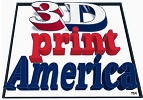Selecting the appropriate 3D filament for outdoor use applications is crucial for ensuring durability and longevity. Employing effective post-processing techniques can enhance the aesthetics and protection of the printed models. This article discusses key factors to consider and explores post-processing steps to protect your 3D printed models outdoors.
Factors to Consider When Selecting a 3D Filament for Outdoor Use:
1. Material Durability: Choose a filament material that offers excellent durability against environmental factors such as UV radiation, moisture, temperature fluctuations, and mechanical stress. Filaments like ASA and PETG are renowned for their outdoor durability.
2. UV Resistance: Ensure that the filament you choose possesses UV-resistant properties to prevent degradation and color fading caused by sunlight exposure. Look for filaments like ASA or those with added UV stabilizers for enhanced UV resistance.
3. Moisture Resistance: Select filaments with good water resistance to withstand rain, humidity, and moisture in outdoor environments. ASA or PETG filaments are less likely to warp or degrade when exposed to outdoor conditions.
4. Temperature Resistance: Evaluate the temperature variations in your outdoor environment and choose a filament that can withstand them without compromising structural integrity. ASA has a higher temperature resistance than PETG but both filaments exhibit good temperature resistance, making them suitable choices.
5. Mechanical Strength: Another important factor when selecting 3D filament for outdoor use is consideration of the mechanical requirements of your application and select a filament with the mechanical strength needed. ASA and PETG are known for their toughness and suitability for applications requiring mechanical stability. Filaments reinforced with carbon fiber or glass fiber additives offer even higher mechanical strength.
Post-Processing Techniques of 3D Filament for Outdoor Use:
1. Surface Preparation: To prepare the printed object’s surface for post-processing, use sandpaper with varying grits. Products like the 3M Wetordry Sandpaper are reliable options for achieving a smooth surface.
2. Primer Application: Enhance paint adhesion and create a smooth base by applying a primer. Look for American-made options like the Rust-Oleum Primer for excellent adhesion and corrosion resistance.
3. Painting: Use high-quality paints such as Krylon Fusion For Plastics Aerosol Spray Paint.
4. Protective Coating: To protect the painted surface and enhance durability, apply a clear protective coating. American-made products like Krylon Clear Acrylic Coatings provide UV resistance and safeguard against moisture and scratches.
5. Epoxy Resin Coating: For objects requiring a glossy and highly durable finish, consider using epoxy resin. Look for epoxy resin kits like the ProMarine Supplies Epoxy Resin which offers clear, glossy coats and long-lasting protection.
In closing, prioritize factors such as material durability, UV resistance, moisture resistance, temperature resistance, and mechanical strength will aid you in selecting the right 3D filament for your outdoor use. Additionally, employing effective post-processing techniques using the right products can enhance the aesthetics and protection of your printed objects.
May your 3D journey be filled with outdoor adventures !
| Filament | UV Resistance | Moisture Resistance | Temperature Resistance | Mechanical Strength | Impact Strength |
|---|---|---|---|---|---|
| ASA | High | High | High | High | High |
| PETG | Moderate | High | Moderate | High | High |
| PC | High | High | High | High | Moderate |
| Nylon | Low | High | High | High | Moderate |
| ABS | Low | Low | Moderate | High | Moderate |
| TPU | Low | High | Moderate | Moderate | High |
| PLA | Low | Low | Low | Moderate | Low |
Table includes general properties for common filament types, not all filaments are created equal, refer to your intended filament manufacturer documentation for more guidance.
Click this link for more information on Painting PLA





